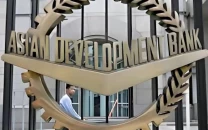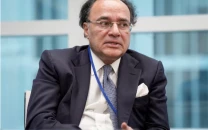Is Pakistan ready to seize US export opportunity?
Major policy overhaul presents rare opening for countries like Pakistan to gain market share

The United States is undergoing a major overhaul of its trade policies, triggering a broader reshaping of global supply chains. Steep tariff hikes on key exporters like China, India and Brazil are forcing US importers to rethink their sourcing strategies.
This disruption presents a rare and valuable opening for countries like Pakistan to step in and gain market share. With Chinese and Indian exports facing average tariffs of 50% or more, Pakistan's comparatively low 19% tariff offers a clear competitive edge. The critical question is whether Pakistan is prepared to seize this moment.
American importers are already shifting supply chains away from high-tariff countries, creating new opportunities for agile exporters. Pakistan, with its recent economic reforms reducing input costs and facilitating capital goods imports, is uniquely positioned to capitalise on this trade realignment.
After years of stagnant exports, this market disruption presents a critical window to gain foothold in vacated market segments, particularly where Pakistan's newly enhanced cost competitiveness can deliver immediate advantages.
Pakistan's current strongest export position in the US lies in textiles and apparel, where it ships over $5 billion of goods annually. By comparison, China exports $40 billion — apparel about $24 billion and textiles $16 billion — and India $9 billion with a balanced 50-50 split between apparel and textiles.
Even a modest redirection of orders from these countries to Pakistan could generate significant gains. The textile sector, given its existing base and infrastructure, remains the most immediate area where Pakistan could scale up exports quickly.
In addition to textiles and clothing, several other sectors show promise. Pakistan's leather exports to the US currently stand at $171 million, while its global leather exports total $710 million, highlighting that the country is competitive in this sector.
Similarly, the sports goods industry, known for its world-class football manufacturing, has exports nearing $400 million and is well-positioned to grow with improved branding and market access. The recent emergence of truck and bus radial tyres as an export item to the US is another bright spot. With exports surpassing $100 million last year and over 20% year-on-year growth, it reflects the kind of momentum that can be built with the right focus.
Pakistan's mobile assembly sector represents one of its most glaring missed industrial opportunities. While India's mobile exports to the US surged to $7.5 billion in FY 2024-25, fuelled by China tariff diversions, Pakistan's $160 million in annual exports remain confined to low-end markets, despite sharing similar starting conditions.
The 2020 Mobile Device Manufacturing Policy attracted 26 assemblers through component duty exemptions and local market protection, driving import substitution (90% of domestic demand). However, this inward-focused model, which failed spectacularly in the auto sector, continues to stifle export potential. Component imports now consume $1.5-2 billion annually without generating meaningful foreign exchange as assemblers prioritise lucrative domestic sales over competitive global integration.
The need for change is particularly critical in the engineering goods sector where Indian exports to the US are about $18 billion, or 28% of their exports, as compared to Pakistan's less than $0.5 billion, or about 7% of its exports. This sector must be freed from the outdated import substitution mindset still embedded within the relevant government institutions.
This is a missed opportunity not just economically but also strategically, as engineering-led exports can help Pakistan diversify its trade base and reduce over-reliance on traditional low value-added sectors. If this sector is freed from micromanagement of government agencies, it could become a key driver of export growth and industrial upgrading.
The global trade order is experiencing its most profound transformation in a generation, presenting Pakistan with a critical opportunity to reshape its economic future. Bold reforms in this year's budget, particularly tariff rationalisation, are already yielding promising results: a record 17% monthly export surge and 42% growth in customs and other taxes on imports, marking the highest single-month gains in recent history.
While it's premature to draw long-term conclusions from one month's data, these early indicators align with economic modelling that predicted benefits from greater openness, validating the reform direction. Critics who focus narrowly on deficits overlook a fundamental truth of development economics: strategic short-term deficits have consistently served as necessary investments for emerging economies to achieve lasting prosperity, as demonstrated by the trajectories of China, Vietnam and other success stories.
The writer is a member of the steering committee on US tariffs. Previously he served as Pakistan's ambassador to WTO and FAO's representative to the United Nations



















COMMENTS (1)
Comments are moderated and generally will be posted if they are on-topic and not abusive.
For more information, please see our Comments FAQ